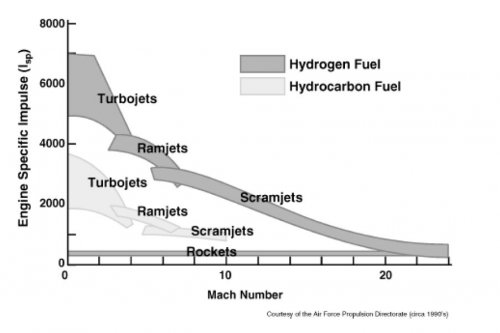Hypersonic Weapons Could Hit Battlefield by 2025 at Space.com
High-Speed Strike Weapon To Build On X-51 Flight at Aviationweek.com (subscription required)
...snip
Now, as the business of data analysis begins, hypersonic planners are turning to what comes next. Although
the X-51A success marks a first step to the potential use of hypersonic propulsion for long-range
reconnaissance, transport and even the first air-breathing stage of a space-access system, the near-term
application will be a missile. Initial follow-on steps will therefore be guided primarily by the requirements of
the Air Force's high-speed weapon development road map and support of the High Speed Strike Weapon
(HSSW), which is expected to be demonstrated at a baseline level around 2020. Theoretically, given this
timescale, such a weapon could be available by the mid-2020s.
... snip
On reaching the launch point south of the Channel Islands and northwest of San Nicholas island, the X-51A was dropped at Mach 0.8. The Atacms ignited and propelled the entire 25-ft.-long stack—including the booster, inter-stage and X-51A cruiser—for 29 sec. until it reached 63,000 ft. and Mach 4.9. The cruiser separated and coasted to Mach 4.8 before the scramjet was started using ethylene. The scramjet then transitioned to JP-7 hydrocarbon fuel, successfully overcoming the point at which the second flight failed in June 2011, when “we unstarted the engine and we lost control of inlet dynamics,” says Brink. The X-51A flew for another 210 sec. under scramjet power, climbing to 64,000 ft. with a constant dynamic pressure (q) trajectory of 2,200-2,350 lb. per square foot. Peak acceleration was over 0.2g, notes Brink.
The vehicle accelerated to Mach 5.1 from Mach 4.8 and was still accelerating “when the tank ran dry,” says
Vogel. “We staged the fuel in flight and were halfway through the second staging and going well when we ran
out of fuel,” Brink adds. The initial start sequence involves spraying fuel toward the aft end of the combustor
to ensure the shock train from the combusting fuel-air mix is not pushed out of the inlet, causing an “unstart.”
As the speed builds, the fuel is injected further forward to match the changing pressure profile in the inlet and
to generate a greater rise in thrust. This had not been possible with the first flight, which was cut short when
the vehicle suffered a nozzle leak 65 sec. into the flight.
With the May 1 flight, “we were able to not only have the initial spray sequence, but in flight but we saw
signs of acceleration out of the vehicle when we staged it. That was to me the one little check-mark we didn't
get out of the first flight,” says Brink.
The X-51A was originally aimed at testing in excess of Mach 6, but none of them exceeded Mach 5.1. Brink
says early in the flight-test program , “we had a real long discussion of flight time versus the Mach 6 number,
and the consensus was it was more important to show we could control the engine acceleration and fly it on
out, run it dry and control it at hypersonic speed . I'm not saying we shot for 5.1. We thought it might be in the
mid-Mach 5 range, but we found changes to inlet geometry [which was changed to a stiffer columbium-based
alloy] made the wedge much thicker. Plus there were changes to cowling to incorporate the fourth engine. So
we knew we had added drag counts.”
Following engine shutdown, the unpowered vehicle was commanded to perform various “parameter
identification” maneuvers to characterize its aerodynamic handling and controllability. Three sets of data
were collected at decreasing Mach numbers as part of evaluations which will help pave the way for future
hypersonic testing and see “what it takes to contain and safely contain these vehicles,” says Jorris. This
testing takes place during the unpowered phase of the flight because “we understood the engine parameters.
Now we have to understand the vehicle itself, so with the engine off we can isolate the pure aerodynamic
phenomenon.” The vehicle's response to specific pitch, roll and yaw inputs will be compared to pre-test
predictions made by NASA Langley.
...snip



